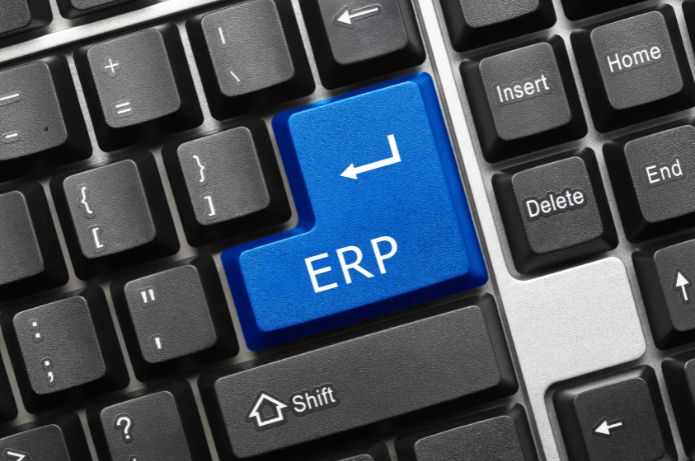Kearney, una de las consultoras de gestión empresarial más grandes del mundo, y Rimini Street, proveedor global de productos y servicios de software empresarial, acaban de publicar los resultados del National ERP Benchmark. Realizado entre abril y mayo de 2024, la primera edición del estudio encuestó a más de 60 empresas brasileñas , creando un panorama general de su relación con sus sistemas de gestión, desde los principales problemas que enfrentan hasta los obstáculos encontrados durante los procesos de implementación.
De hecho, los puntos débiles siguen siendo similares a los que el mercado se ha acostumbrado a ver en los últimos años. Entre los tres principales problemas señalados por los ejecutivos entrevistados se encuentran las personalizaciones excesivas, que son difíciles de mantener (64%); el alto volumen de sistemas satélite integrados con ERP (43%); y la dificultad para gestionar la gran cantidad de integraciones existentes (26%). La lista también incluye versiones obsoletas sin soporte, módulos básicos que no satisfacen las necesidades, la insatisfacción de las áreas de negocio con el sistema de gestión y el alto número de incidentes de producción.
“Aun así, el 47% de las empresas encuestadas considera que sus sistemas de gestión son estratégicos y críticos para su negocio”, afirma Guilherme Silberstein, director especialista de Kearney, señalando también que, a pesar de experimentar desafíos, la mayoría de las empresas considera estables sus sistemas de gestión: el 80% considera alto el nivel de estabilidad; el 18%, medio; y solo el 2% lo considera bajo.
En cuanto al soporte de AMS (Servicios de Gestión de Aplicaciones), el estudio reveló que, independientemente del tamaño, la mayoría de las empresas prefieren el soporte externalizado. En este caso, el porcentaje entre las grandes empresas fue del 64 %, mientras que entre las pequeñas y medianas empresas se redujo al 58 %. Asimismo, las pequeñas empresas son las que más recurren a equipos de soporte internos (42 %), seguidas de las medianas empresas (33 %) y las grandes empresas (29 %).
La infraestructura utilizada por estas empresas fue otro punto de interés en la investigación, que encontró que la gran mayoría de ellas (63%) aún mantiene sus sistemas fuera de la nube pública (AWS, Azure o GCP) y en infraestructura de nube local o dedicada/privada. “De este total, sin embargo, solo el 8% no tiene intención de migrar sus sistemas a la nube”, explica Edenize Maron , CEO de Rimini Street en Latinoamérica . En cuanto a la infraestructura, el 27% utiliza la nube en el modelo “Bring Your Own License” y solo el 10% utiliza la nube en el modelo SaaS (Software as a Service). Entre estos, los principales criterios citados para elegir un hiperescalador fueron la ubicación (46%); aceleradores (46%); valor ofrecido como crédito (42%); negociación de otros servicios (38%); y porcentaje de uso (19%).
Dificultades en la implementación
El estudio también buscó brindar un panorama histórico de los proyectos de implementación de ERP en Brasil y, en este sentido, encontró que el 72% de los sistemas de gestión en operación se implementaron antes de 2017. Siguiendo la línea de tiempo, el 12% se implementaron entre 2017 y 2019; el 6% entre 2020 y 2022; el 8% en 2023; y solo el 2% en 2024. En promedio, estas implementaciones duran entre 18 y 24 meses, con un costo promedio de más de R$ 25 millones, lo que resulta en un nivel de estandarización que varía entre el 50% y el 75%; y una personalización respectiva entre el 25% y el 50%.
En estos proyectos, se identificaron obstáculos que impactaron directamente el costo y la calidad del entregable. En el primer caso, los principales obstáculos fueron la gran cantidad de solicitudes de cambio (38%); retrasos en el cronograma (27%); y cambios de alcance a lo largo del proyecto (21%). En cuanto a la calidad, los principales obstáculos identificados fueron la preparación deficiente de los usuarios clave (46%) y la difícil gestión del cambio organizacional (40%). En estos casos, las principales estrategias utilizadas para mitigar estos obstáculos fueron el diseño e implementación de una gobernanza estructurada, la contratación de una PMO global independiente del implementador y la selección de representantes para supervisar las actividades de la PMO del programa.
Ante el escenario presentado por las empresas, Kearney y Rimini Street sugieren cinco áreas clave de enfoque para el mercado de ERP en el futuro cercano:
- Abordar los principales desafíos diarios : es necesario evaluar los desafíos a los que se enfrenta e identificar las opciones más alineadas con el objetivo empresarial. En este caso, las nuevas contrataciones y las migraciones pueden ser opciones ideales para algunas empresas, pero otras estrategias pueden estar más alineadas con los objetivos de otras.
- Mitigación de riesgos de implementación : con base en las lecciones aprendidas, es importante prepararse para nuevos proyectos prestando atención a una gobernanza sólida y a objetivos comerciales claros;
- Migración de SAP ECC a S/4HANA : el fin del soporte de SAP para ECC en 2027 es un factor en el proceso de toma de decisiones con respecto a la migración a S/4HANA u otro sistema ERP que no sea SAP, lo que se espera que afecte al mercado en los próximos años;
- Elección de un sistema ERP : existe una importante consolidación en el mercado y entre los actores invitados a participar en nuevos procesos, de ahí la importancia de realizar estudios detallados de las opciones de sistemas disponibles, con especial énfasis en los proveedores nacionales;
- El ecosistema de implementadores es altamente complejo y, por lo tanto, requiere un análisis y una calificación minuciosos antes de los procesos de licitación. A pesar de la importante consolidación entre los grandes proveedores, la alineación entre el implementador y la cultura de la empresa es necesaria para una relación exitosa.


